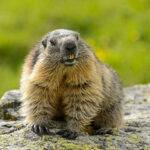Sled Dog Day is celebrated every year on February 2. This is a day set aside to honor the hardest-working dog breed — the sled dogs. These large dogs are trained to wear a harness and pull heavy weights in the coldest regions. They were the only means of transport in areas such as the Arctic for thousands of years and are still the most reliable way to transport supplies in the more rural areas.
Sled dogs played an important role in the exploration of the Arctic and the Antarctic poles and were instrumental during the Alaskan Gold Rush.
History of Sled Dog Day
Sled dogs are popular in the coldest regions of the world. They’ve been used in Canada, Norway, Sweden, Lapland, Finland, Siberia, and, closer home, Alaska.
Thought to have been crossbred with wolves, sled dogs have been specifically bred to be large and capable of carrying really heavy weight across large distances. In America, sled dogs were first kept by the Inuit people for transportation.
During the Alaskan Gold Rush, the only way to access the gold camps in winter was by dog sled. Any supplies — from food to medication — would need to be moved by dogsled in winter because there was no other transportation available at the time. Sled dogs were also used to deliver mail.
Between this and the explorations of the poles, sled dogs have played a vital role in the lives of people living in the frozen parts of the planet. When there was a diphtheria outbreak in Nome, Alaska, sled dogs came to the rescue.
A serum was needed to treat the suffering people of Nome, but there was none in town. The nearest town with the scrum was Nenana, but that was 600 miles away and inaccessible except by dog sled. Villages between the two towns set up a relay with different teams of dogs working to get the serum to Nome. The serum reached in six days, thanks to the efforts of the people and the hardworking sled dogs.
Today, fewer dog sleds are necessary for survival and transportation. Instead, dog sledding has become a recreational activity, with races set up to celebrate the sheer power and speed of the incredible sled dog breeds.
The dogs pull their sleds as a team, and each member of the team is carefully chosen to ensure that they make up for each other’s weaknesses and work well together.
Sled Dog Day timeline
Sled dogs become the primary mail delivery service along the Yukon River.
As the Gold Rush begins, sled dogs play vital roles, being the only means to access the camps in winter.
The only way explorers can go to the Arctic is with sled dogs, and this inspires explorations to the Antarctic.
With sled dogs as the only hope to get the life-saving serum from Nenana to Nome, a relay team of dogs gets the serum to Nome in six days.
Sled Dog Day FAQs
Can you adopt a sled dog?
Working sled dogs may be hard to keep at home, but there are plenty of retired sled dogs who would love to be adopted! Just make sure you can meet their food and exercise needs before you adopt one.
Do sled dogs like pulling sleds?
Sled dogs have been bred to be working dogs and are happy to pull sleds. They have a lot of energy that needs to be used up, and sledding is the best way.
Do sled dogs get cold?
Sled dogs are used to the cold and have fur and paw pads that protect them from the cold and the moisture of the areas in which they run.
How to Celebrate Sled Dog Day
Visit the Yukon Quest
Held every February, the Yukon Quest is known as the toughest dog sled race in the world. In 10 to 20 days, dog sleds of six to four dogs run between Fairbanks and Yukon.
Go see the Balto statue
Visit Central Park, where there is a statue put up in honor of Balto, the lead dog who delivered the serum to Nome, Alaska, during the diphtheria outbreak.
Watch a film on sled dogs
Films like "Eight Below," about two dogs that survived Antarctica, and "Balto," about the Nome serum run, are great ways to celebrate Sled Dog Day!
5 Facts About Sled Dogs That Will Surprise You
Poodles have been used as sled dogs
Non-sled-dog breeds such as Poodles, Labrador Retrievers, and St. Bernards have been used to pull sleds in the past.
There are 11 sled dog breeds
The majority of the sled dog breeds are Huskies, the rest are Laikas, Malamute, and Samoyed, but there is also a rare dog called the Chinook.
Sled dogs provided military support
The French-Canadians used sled dogs during the Seven Years' War.
Sled dogs start running young
At six months, the puppies run beside dog teams so they can learn from the big dogs.
Sled dogs love to run
Sled dogs were bred for running, they love their job, and need a lot of exercise when they’re not working.
Why We Love Sled Dog Day
Sled dogs deserve all the love
These adorable dogs have been working with and for people for thousands of years, and we think they deserve to be celebrated.
Sledding is a dying art
With alternative transportation methods available, a lot of the dog sledding culture is being forgotten, and we want to keep the tradition alive.
Sled dogs still work today
In rural areas where other transportation isn’t easy to secure, sled dogs continue to work hard for their people, and they deserve to be celebrated.
Sled Dog Day dates
| Year | Date | Day |
|---|---|---|
| 2025 | February 2 | Sunday |
| 2026 | February 2 | Monday |
| 2027 | February 2 | Tuesday |
| 2028 | February 2 | Wednesday |
| 2029 | February 2 | Friday |




































